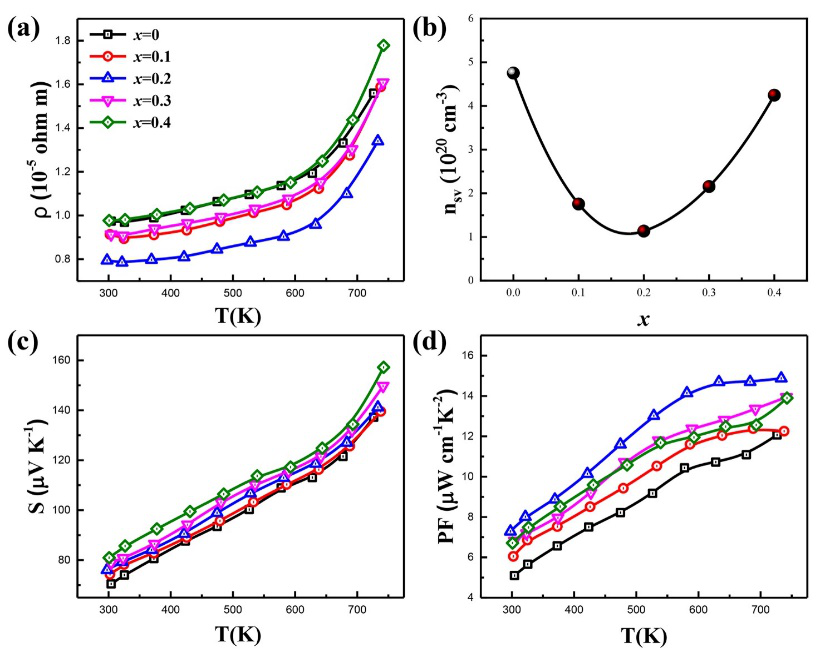Lately, Chinese scientists in Institute of Solid State Physics (ISSP), Hefei Institutes of Physical Science reported that they have achieved high thermoelectric performance of Cu12Sb4S13 tetrahedrites by optimizing the carrier concentration, energy dependent carriers scattering and phonon scattering.
At present, energy and environment become two main challenges for across the world. Thermoelectrics can convert heat to electricity directly or vice versa without moving parts and any pollution, which attracts much research interests.
Recently, tetrahedrite Cu12Sb4S13 has received more and more attention due to its cheap raw-material, intrinsic low thermal conductivity (0.5-1.00 W m-1K-1 near room temperatures) and its constituents being free of Pb/Te.
Although previous researches indicated that donor substitution at the Cu sites can tune the carrier concentration and improve the thermoelectric performance of Cu12Sb4S13, few of them tried to study the effects of element substitution on the formation of impurity phase and changes in stoichiometry of main phase, which will influence the thermoelectric properties of Cu12Sb4S13.
In this work, the team found that the isoelectronic substitution of Se for S and replacement of Cu by Zn gave rise to changes of stoichiometry of Cu12Sb4S13 owing to precipitation of Cu3SbS4 phase, which caused variations of S vacancies and electron concentration (FIG. 1(b)).
Besides, energy dependent carriers scattering caused by interface potentials was expected to occur, leading to the improvement of themopower.
In addition, the dual substitution leads to reduction of lattice thermal conductivity due to enhanced phonon scattering by the dopants and interfaces between matrix and the impurity phase.
As a result, a large ZT = 0.9 (at 723 K) was achieved in Cu12-yZnySb4S12.8Se0.2 samples with y = 0.025 and 0.05, pointing that the dual substitution was an effective approach to improve its thermoelectric performance.
This work acknowledged the funding support from the Natural Science Foundation of China under grant No. 51672278 and 11674322.
Link to the paper: Achieving high power factor and thermoelectric performance through dual substitution of Zn and Se in tetrahedrites Cu12Sb4S13

(a) Temperature dependence of electrical resistivity (ρ) for the Cu12Sb4S13-xSex samples. (b) The electron concentration caused by S vacancies in Cu12Sb4S13-xSex samples. Temperature dependence of (c) thermopower (S) and (d) power factor (PF) for the Cu12Sb4S13-xSex samples. (Image by ZHU Chen)

Temperature dependence of (a) total thermal conductivity (κ), (b) lattice thermal conductivity (κL) and (c) ZT for the Cu12-yZnySb4S12.8Se0.2 samples, (d) The maximum ZT for reported high performance Cu12Sb4S13 based materials and that obtained in present work. (Image by ZHU Chen)
Contact:
ZHOU Shu
Hefei Institutes of Physical Science (http://english.hf.cas.cn/)
Email: zhous@hfcas.ac.cn
 Tel: +86-551-65591206
Tel: +86-551-65591206
 Fax: +86-551-65591270
Fax: +86-551-65591270
 Emai: zhous@hfcas.ac.cn
Emai: zhous@hfcas.ac.cn
 350 Shushanhu Road
350 Shushanhu Road